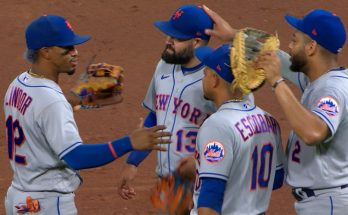The Boston Celtics’ front office has made some intriguing roster moves that could have meaningful implications for their ongoing quest to reclaim NBA supremacy. On Tuesday, reports surfaced that the Celtics completed a trade for Georges Niang and signed Chris Boucher, two additions that might seem modest on the surface but could prove quite valuable in the context of the team’s makeup, their playing style, and their goals for the season. As we examine these moves, it’s important to consider not just the players’ individual skills and career trajectories, but also how they fit into the Celtics’ broader roster construction, coaching philosophy, and the highly competitive Eastern Conference landscape.
Georges Niang is a versatile forward known primarily for his shooting ability and high basketball IQ. He has carved out a niche in the NBA as a reliable role player who spaces the floor well, has the ability to create shots off the dribble, and plays within a team-oriented system. Niang’s strengths align closely with the Celtics’ offensive scheme, which values spacing, ball movement, and three-point shooting. The Celtics have long prioritized players who can shoot efficiently from deep and who are capable of making quick decisions on offense, and Niang fits this mold nicely.
Before joining the Celtics, Niang spent time with the Indiana Pacers, Philadelphia 76ers, and Utah Jazz, contributing primarily as a floor spacer and secondary playmaker. He’s averaged roughly 10 points per game over his career, with a respectable three-point shooting percentage hovering around 38-40%, which is quite valuable in today’s NBA. Niang also brings a certain toughness and competitive edge; he’s known for his work ethic and willingness to play within a team structure rather than seeking individual glory. This makes him a complementary piece rather than a focal point, which fits perfectly with Boston’s approach, where the primary offensive load falls on stars like Jayson Tatum and Jaylen Brown.
The addition of Niang addresses a few key needs for the Celtics. One is depth on the wing positions. Boston’s rotation has been solid but somewhat thin outside of its core stars. Injuries or fatigue can expose vulnerabilities, especially during the grind of an 82-game regular season and the playoffs. Niang’s ability to slide into various roles—from small forward to power forward—provides flexibility for head coach Joe Mazzulla to manage minutes and matchups more effectively. His presence means that the Celtics don’t have to rely solely on younger or less experienced players when secondary scorers are needed. Niang can knock down catch-and-shoot threes, but he’s also comfortable handling the ball in certain sets and making the right reads to facilitate ball movement.
Additionally, Niang’s shooting could open up lanes for Boston’s stars to operate. When opponents have to respect his three-point shooting threat, it creates more spacing for Tatum and Brown to attack the rim or operate in isolation situations. This dynamic spacing is critical for maximizing the Celtics’ offensive efficiency. Moreover, Niang is an intelligent defender capable of switching onto multiple positions, which complements Boston’s defensive schemes that rely on versatility and team cohesion rather than individual stardom.
On the other hand, the signing of Chris Boucher adds another layer of depth in the frontcourt with a somewhat different skill set. Boucher is a player known for his shot-blocking, rim protection, and ability to stretch the floor as a big man who can hit threes. He’s the kind of “3-and-D” big that many NBA teams covet, especially those looking to blend traditional post defense with modern spacing principles.
Boucher’s journey in the league has been somewhat unconventional. Undrafted out of college, he fought his way into rotation roles with teams like the Toronto Raptors and Golden State Warriors, showcasing his energy, hustle, and defensive instincts. While not a primary scorer, Boucher’s impact is felt most on the defensive end, where his length and timing allow him to alter shots and protect the paint. He’s also surprisingly effective as a perimeter shooter, which forces opposing defenses to respect him away from the basket. This combination is valuable for the Celtics, who have needed consistent rim protection to pair with their switch-heavy perimeter defense.
The Celtics have a defensive system that emphasizes versatility and the ability to switch assignments seamlessly. Boucher’s mobility and length make him an ideal fit for this kind of scheme, as he can cover ground quickly and provide rim protection without sacrificing the team’s pace or spacing. His ability to hit open threes also means Boston can deploy him as a small-ball center or power forward in certain lineups, which aligns with the current NBA trend toward smaller, more versatile frontcourts.
Another important aspect of Boucher’s signing is the added depth it gives the Celtics in case of injuries or fatigue among their big men. The Celtics’ frontcourt rotation has been anchored by players like Robert Williams and Al Horford, both of whom bring unique strengths but also have injury concerns or limitations as they age. Having a player like Boucher who can step in and maintain defensive intensity and floor spacing is crucial for sustaining success over a long season and through the playoffs.
Together, the Niang trade and Boucher signing send a clear message about the Celtics’ roster priorities: they are building a team that values shooting, defensive versatility, and depth. Both players complement the core stars without disrupting team chemistry, which is essential for a squad that relies heavily on unselfishness and collective execution. Neither Niang nor Boucher is expected to be a primary playmaker or star, but their roles as high-quality role players are vital for championship contenders.
From a strategic standpoint, these moves also reflect the Celtics’ understanding of the modern NBA’s demands. The game has increasingly shifted toward pace-and-space basketball, where three-point shooting and defensive switching are paramount. Niang’s shooting and Boucher’s defensive and spacing abilities fit neatly into this paradigm. They enable Boston to run lineups that are adaptable and tough to guard, while also maintaining strong defense in the paint and on the perimeter.
Moreover, these acquisitions add to Boston’s flexibility when it comes to matchup considerations in the playoffs. The Eastern Conference is loaded with teams boasting varied offensive threats, including physical big men, athletic wings, and crafty guards. Having players like Niang and Boucher allows the Celtics to tailor their rotations more finely. For instance, Niang can help stretch the floor against teams that pack the paint, while Boucher can protect the rim and switch on smaller, quicker players in a way that might not have been possible with traditional centers.
The psychological and locker-room impact of these moves should not be underestimated either. Both Niang and Boucher are known for their professionalism and positive attitudes, which helps maintain a healthy team culture. Chemistry is often an underrated factor in championship runs, and adding players who buy into the team-first mentality aligns perfectly with the Celtics’ ethos. Their willingness to embrace defined roles without pressing for individual spotlight can help the core stars remain confident and focused.
It’s also worth noting the financial and roster management aspect. These moves likely come with reasonable contracts that don’t burden the Celtics with long-term salary cap issues, providing flexibility for future trades or signings. This financial prudence is important given the tight salary cap landscape in the NBA and the Celtics’ potential need to make further moves to support their championship window.
In conclusion, the Celtics’ acquisition of Georges Niang and the signing of Chris Boucher represent smart, strategic additions that enhance the team’s depth, versatility, and ability to execute their style of play. Niang’s shooting and playmaking off the ball, combined with Boucher’s defensive presence and floor spacing, address specific roster needs without disrupting the team’s core. These moves give head coach Joe Mazzulla more tools to manage rotations and adjust to opponents, which is invaluable in the long and grueling NBA season and playoffs.
While neither Niang nor Boucher may be headline-grabbing stars, their impact should be measured by how well they fit into the Celtics’ system and contribute to the team’s ultimate goal of winning a championship. Depth, versatility, and role players who understand their responsibilities are the hallmarks of title contenders, and the Celtics have clearly recognized this in their latest roster moves. If Niang and Boucher can perform their roles effectively, Boston’s core stars will be better supported, their weaknesses patched, and their championship aspirations strengthened.



